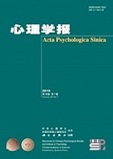|
|
PRESCHOOLERS' ABILITY TO TELL ANIMATE FROM INANIMATE OBJECTS
Fang Fuxi (Institute of Psychology, Academia Sinica)
1985, 17 (01):
64-72.
Three to five year-old children were asked to judge and explain four blocks of questions concerning actions, parts, mental states and reciprocal ability respectively to test their knowledge about the differences between animate and inanimate objects. The results showed:1) The preschoolers, even at 8 years of age, not only distinguised a person from a rock, but also from a doll. They didn't attribute the characteristics of the animate (e. g. the person) to the inanimate (e. g. the rock or doll);2) The children's identification of a person, a rock or a doll was based not only on the movement or stillness of the object, but also on the parts or materials of which it is made, its origin, properties and functions. The 3-year-olds were able to distinguish a person from a doll according to endogenous movement or movemont produced by an external agency;3) The children's understanding of the distinction between animate and inanimate objects proceeded from external to internal phenomena, from analysis to integration, from appearance to reality; and the ability to differentiate is directly related to their understanding of causality and the cause of movement and their basic knowledge about these objects.
Related Articles |
Metrics
|




